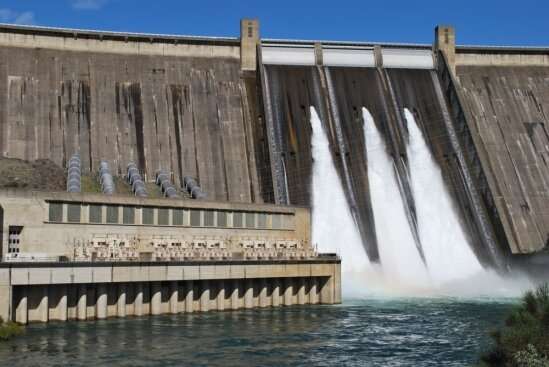The African Hydrogen Partnership Wants To Catalyze The African Green Hydrogen Economy
January 7th, 2021 by Remeredzai Joseph Kuhudzai
Hydrogen plays a critical role in the world’s economy with applications in the industrial and transportation sectors. Hydrogen is used in carbon intensive industries such as metals refining and in the manufacturing of ammonia. Hydrogen is derived mostly from fossil fuels at the moment, particularly via the reforming of natural gas. Technological advances and massive cost reductions in renewable energy generation, such as in the solar and wind space, mean that the cost of producing hydrogen from renewables keeps coming down. This makes it more feasible to produce so-called green hydrogen. A lot of African countries have tremendous potential to utilize their abundant renewable energy resources, and green hydrogen could be a viable option for certain sectors.
Editor’s note: CleanTechnica does not see electricity storage using hydrogen (“green hydrogen”) as a cost-effective, efficient, logical way to store electricity — now or in the future. However, we do see it as potentially useful for industrial processes and very heavy-duty, long-haul transport. More on that will be published soon.
We caught up with Vincent Oldenbroek (VO), Secretary General and co-initiator of the African Hydrogen Partnership (AHP), to find out more on the latest developments in the hydrogen space and their vision for Africa.
RJK: Hydrogen is trending a lot these days. What has brought hydrogen back to the limelight?
VO: Let it be clear right from the start. All zero emission energy technologies, energy carriers, and storage methods are highly needed to shift to a fully renewable, sustainable, global, and fair society. There is no silver bullet. Nevertheless, hydrogen is extremely versatile and is a missing link in a fully renewable society. After several ups and downs over the past decades, some critical parts and drivers of the long envisioned green hydrogen economy are now coming together. Hydrogen is here to stay this time due to six major developments not being present in the previous ups:
- The global population has become aware of the impacts of the use of fossil fuels. The impact of climate change, air and water pollution and loss of biodiversity is being felt stronger and stronger globally. Therefore, more and more regulations are coming into place ruling out the use of fossil fuels.
- As you rightfully mention, the cost of renewable electricity has decreased tremendously the past 10 years. In particular, solar and wind electricity is now in many places in the world cheaper than new built, nuclear, coal, gas or hydropower plants.
- Electrolyzers are becoming rapidly cheaper because of scaling up, economies of scale, material developments, and efficient integration with intermittent renewable and novel concepts, resulting in the fact that green hydrogen cost will be primarily driven by the green electricity cost. The cheaper hydrogen becomes, the more sectors can use it. From the first fuel cells and hydrogen used in space to everyday use, similar to the development pathway of solar panels.
- A large amount of hydrogen storage technologies have become available. From underground seasonal hydrogen storage in salt caverns, to high pressure light weight storage tanks for drones, airplanes and vehicles, metal hydrides or liquid fuels such as ammonia (for large ships) or organic hydrogen carriers.
- Hydrogen powered (heavy duty) vehicles are now very close to having the same operational performance as petrol, diesel, or CNG/LPG powered counterparts. Due to so-called ‘spill-over’ effects from other sectors such as aerospace (carbon fiber composites for high pressure, compact, and lightweight hydrogen tanks), power electronics (regenerative and compact electric motors, efficient inverters, traction batteries, and capacitors), nanotechnology (reducing expensive metals in fuel cell catalysts to the amount of current car exhaust gas catalytic converters), which have made storage and fuel cells more compact, cheaper, lighter, and more efficient.
- Several regions in the world (e.g. Japan, Korea, Europe), realize the only way to become a fully renewable society is by importing low cost renewable energy from other regions with an abundance of it. Hydrogen and other derived carriers make it possible to store and transport this renewable energy from one continent to another on a large scale in a cost-effective way. Engineers have proven that natural gas pipelines and tankers can be re-used and missing technology is now being trialed.
RJK: A lot of people are still skeptical of hydrogen since the majority of it comes from reforming of methane/fossil fuels currently.
VO: Past performance is no guarantee of future results, investors say. The same applies to a system in transition and technologies yet to be discovered. Keep in mind, changing a complete energy, chemical, and fuel system built-up over a century is not something which will happen overnight. As hydrogen is an energy carrier, the hydrogen is as green and as cheap as the energy source is. For a long time, low-cost green energy was only available in places with large amounts of hydropower and a low local consumption of the generated hydroelectricity. An interesting fact is that Africa for a long time occupied place #1 and #5 with the biggest hydrogen production plants (based on splitting water, called electrolysis) powered by hydropower (Aswan, Egypt and Kwekwe, Zimbabwe). Unfortunately, many places in the world did not have access to low cost and large amounts of hydropower or green energy for a long time. Due to the large amount of oil and natural gas discoveries, in combination with the belief that the world would transition to nuclear energy or fusion, fossil fuels were cheap and used abundantly. As mentioned in the previous answer, due to the current and ever decreasing cost of solar and wind energy being available on a small and large scale, more and more regions not having had access before to low cost green energy, now do have. As electrolyzers can be bought from very small to large size, hydrogen could also be made wherever green energy is available.
RJK: How competitive is green hydrogen from the unit economics point of view vs. natural gas and hydrogen from fossils?
VO: The so-called negative externalities of natural gas and fossil fuel production are often not included in their cost and therefore are actually too cheap. Who pays for the effects of climate change or health impacts due to air pollution, just to name an example? Also several fossil-based hydrogen production plants are already amortized. So comparing the marginal hydrogen production cost from fossils fuels of a fully developed technology with green hydrogen from new-built plants of a new technology is not a fair comparison.
The economic situation of a country is for a great part defined by the trade balance. For countries not having fossil energy resources or profiting from the export and value creating chains, local green hydrogen production could already be competitive when viewed holistically. Importing fossil based hydrogen fuel might seem cheaper, but mostly creates less jobs then having the value chain locally present.
Economics not only encompasses the cost of the commodities itself, but also the cost of financing the build up of infrastructure. Currently the financial sector is moving away from financing carbon-based infrastructures and favors green investments, which will result in lower financing costs for green tech.
Lastly, we haven’t spoken about rules and regulations ruling out fossil fuels, then the question becomes; which green technology is the most competitive?
RJK: Tell us a bit more about the African Hydrogen Partnership, how it started, and your mission and vision for Africa.
VO: The AHP is the main, continent-wide African association covering fuel cells, hydrogen, related chemicals, and carriers. Membership is open to private sector organizations, research institutes, universities, and other hydrogen and related associations, each having its own grouping and representation on the Board of the AHP. The mission of the AHP is to establish hydrogen economies in Africa, for the benefit of Africa and the world. Establishing hydrogen economies in Africa will provide tremendous social, economic, and environmental benefits, all at the same time.
It started in 2014 when Mr. Siggi Huegemann, a German who resides in the UK, initiated the idea for an African hydrogen association and hosted a daily blog called African Hydrogen Power. When I knew I would move to Harare, Zimbabwe in 2018, I joined Mr. Huegemann and we formed an unincorporated association to formally establish the organization in Africa and renamed the initial initiative to African Hydrogen Partnership (AHP).
In 2019, the AHP published its new website and three visionary documents about establishing and financing hydrogen economies in Africa. We received valuable feedback on the vision via visits to Tanzania, China, Nigeria, and close to hundred conference calls, meetings in the UK and Zimbabwe, and email exchanges with all kinds of different organizations. After a small conference in 2020 in Addis Ababa with a good representation of stakeholders from Africa, Europe, and Asia, Mr. Ian Fraser and Ms. Catherine Scholtz, Directors of RTS Africa Engineering, joined the unincorporated association. Together with them, we formally registered the AHP, with RTS Africa Engineering and Hypowa as the first two member companies, in Mauritius in November 2020.
RJK: Why is Africa one of the best places for green hydrogen production?
VO: Developing countries would be the big winners from the move toward a hydrogen economy as indicated by the Asian Development Bank. As indicated before, establishing hydrogen economies in Africa will provide tremendous social, economic and environmental benefits, all at the same time. Social and economic drivers are often a lot stronger than solely relying on environmental drivers.
Africa is perfectly positioned, as it has relatively little fossil-based infrastructure and vested interests. Africa is a growth market in general, not only for the energy sector. The African population is the fastest growing worldwide and the poverty rate is declining. Instead of using fossil energy for facilitating the growth, one could ‘leapfrog CO2’ by using green electricity and hydrogen. Africa will be one of the places least frozen by the past fossil energy dogma. Strong infrastructure is actually detrimental in this new world. When the current system works too well, there is resistance to change and too much legacy to overcome. Africa can be regarded in many cases as a so-called ‘greenfield’. There is a lot of non-used and non-arable, barren or wasteland available. This comes on top of the abundance of very good renewable energy resources as well as mineral resources. From a social point of view, Africa also has a large and young workforce, which could build up the green hydrogen and electricity value chains. The proximity to Europe and the Middle East also facilitates trade, exchange and collaborations.
RJK: Which industries and applications are ripe for introduction of hydrogen and growing the green hydrogen economy in Africa?
VO: Industries where uptime and availability of energy is very crucial to their business model or is essential to the safety of their operation. Think of the telecom sector, (underground) mining and ventilation, hospitals, hotels.
On an energy basis, one pays more for transport fuels (e.g. petrol, diesel) than for industry feedstock or chemicals (e.g. ammonia, cement and steel production). Regions where the transport of fuels or chemicals defines a large part of the landed costs, green hydrogen is or will be cost competitive. Think of trucking or the production of ammonia based fertilizers in landlocked countries. In remote mining areas, a great example is Anglo American, which starts trialing with onsite hydrogen production from solar PV to power the mining operation and produce hydrogen fuel for the mining dumper trucks.
Apart from the economic drivers, environmental drivers are also creating awareness and targets are set to reduce the carbon footprint in Africa. Many industries in Africa are part of globally operating companies where shareholders demand lower carbon footprint. As Africa is a growth market, it makes sense reducing or avoiding the carbon footprint in Africa, especially when expanding.
RJK: Which countries in Africa are best suited to exploit opportunities in the green hydrogen economy?
VO: All African countries can reap in one way or another the benefits from a green hydrogen economy. Close to all African countries are rich in at least one or more of the most prevalent renewable energy sources, wind, solar, hydropower, geothermal, biomass. Most African countries have a relatively low population density and non-arable land available. These factors indicate that the basic requirements are in place to become self-sufficient green hydrogen economies and can avoid or reduce the import of energy significantly.
Several African countries around the Northern and Southern Tropics have extremely good solar and wind resources. Besides that, also the availability of large amounts of non-arable land and are in the proximity of or have infrastructures connecting to the ocean, think of the Northern Africa countries and Namibia, South Africa, Angola, and Botswana. These countries could produce hydrogen at such low cost and significant quantities that it will become competitive to current fossil fuel based applications worldwide and so export hydrogen (either in liquid form, bounded to nitrogen as ammonia or liquid organic hydrogen carriers) to regions lacking large amounts of renewable energy sources or land availability, such as Europe, Japan, South Korea, and others. Several experts foresee a global energy system similar to today’s system based on oil and natural gas.
Several other African countries have an extreme abundance of mineral resources essential in producing solar panels, wind turbines, electric motors, batteries, electrolysers and fuel cells or biological carbon (biomass), being essential in producing chemicals and bioplastics for example.
I truly hope/believe the agreement of the African Continental Free Trade Area (AfCFTA) can/will accelerate the creation of a pan-African and global green hydrogen economy.















 Participating students Ali O’ Donoghue and Eilís Mullane, students from St Brigid’s Secondary School, Killarney, Co Kerry and their project ‘Vertical Farming -The Future of Healthy Schools’.
Participating students Ali O’ Donoghue and Eilís Mullane, students from St Brigid’s Secondary School, Killarney, Co Kerry and their project ‘Vertical Farming -The Future of Healthy Schools’.
 The climate crisis has severely impacted California’s water-energy nexus. Here we see the contrast between a full reservoir behind Folsom Dam in July 2011 compared to the water level under the extreme drought in January 2014. Credit: United States Bureau Of Reclamation
The climate crisis has severely impacted California’s water-energy nexus. Here we see the contrast between a full reservoir behind Folsom Dam in July 2011 compared to the water level under the extreme drought in January 2014. Credit: United States Bureau Of Reclamation